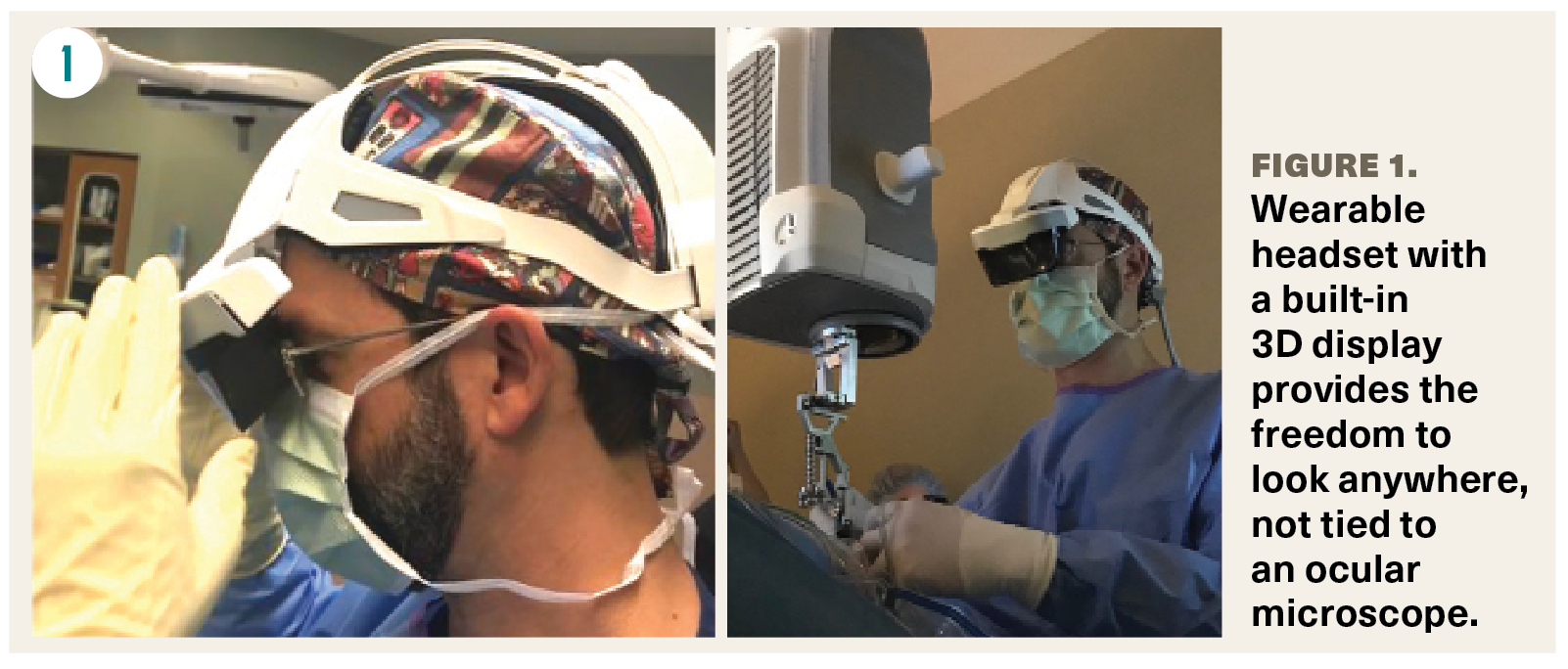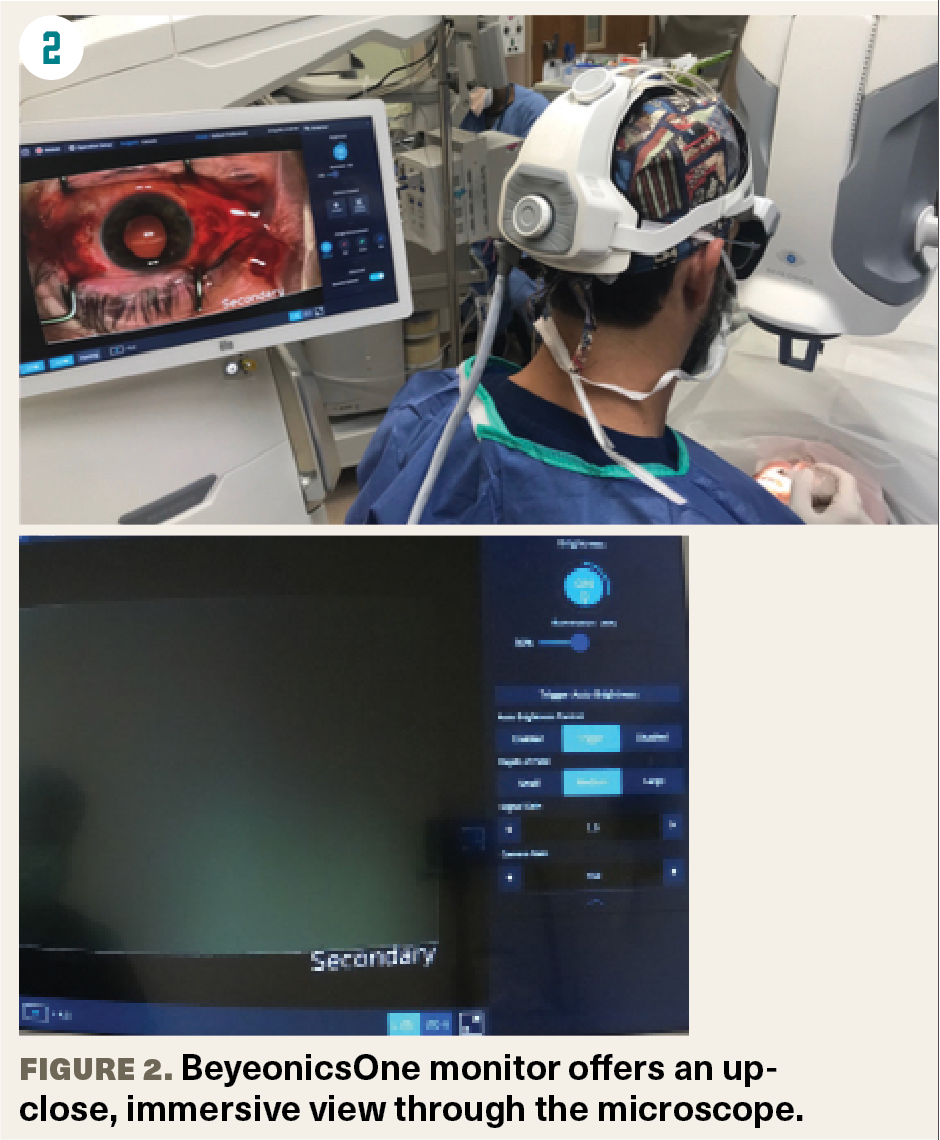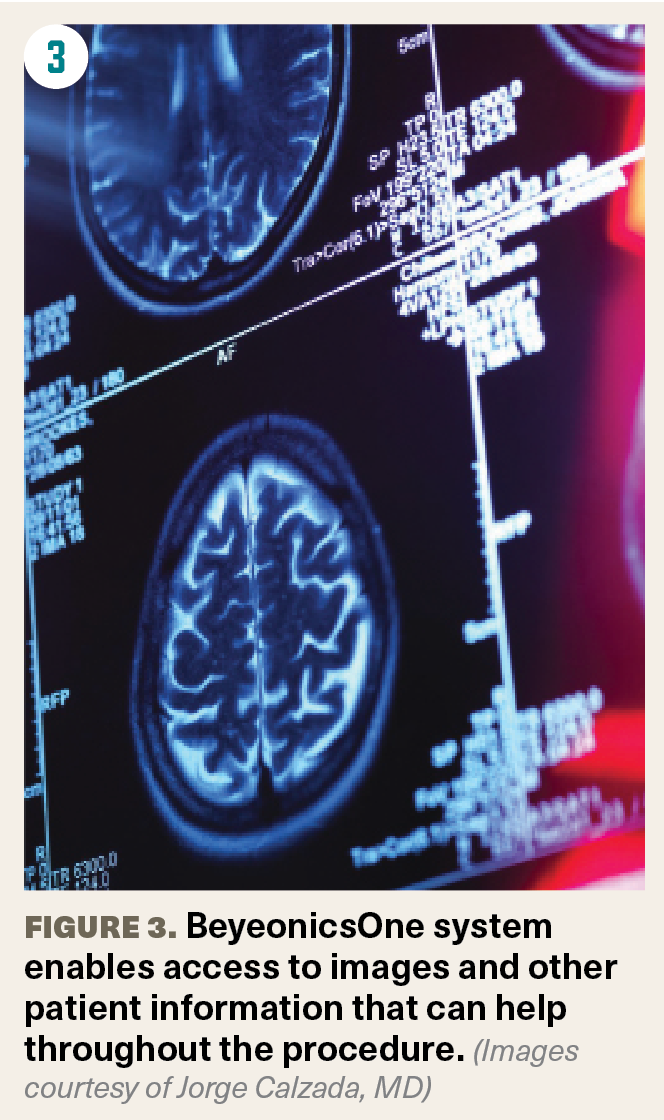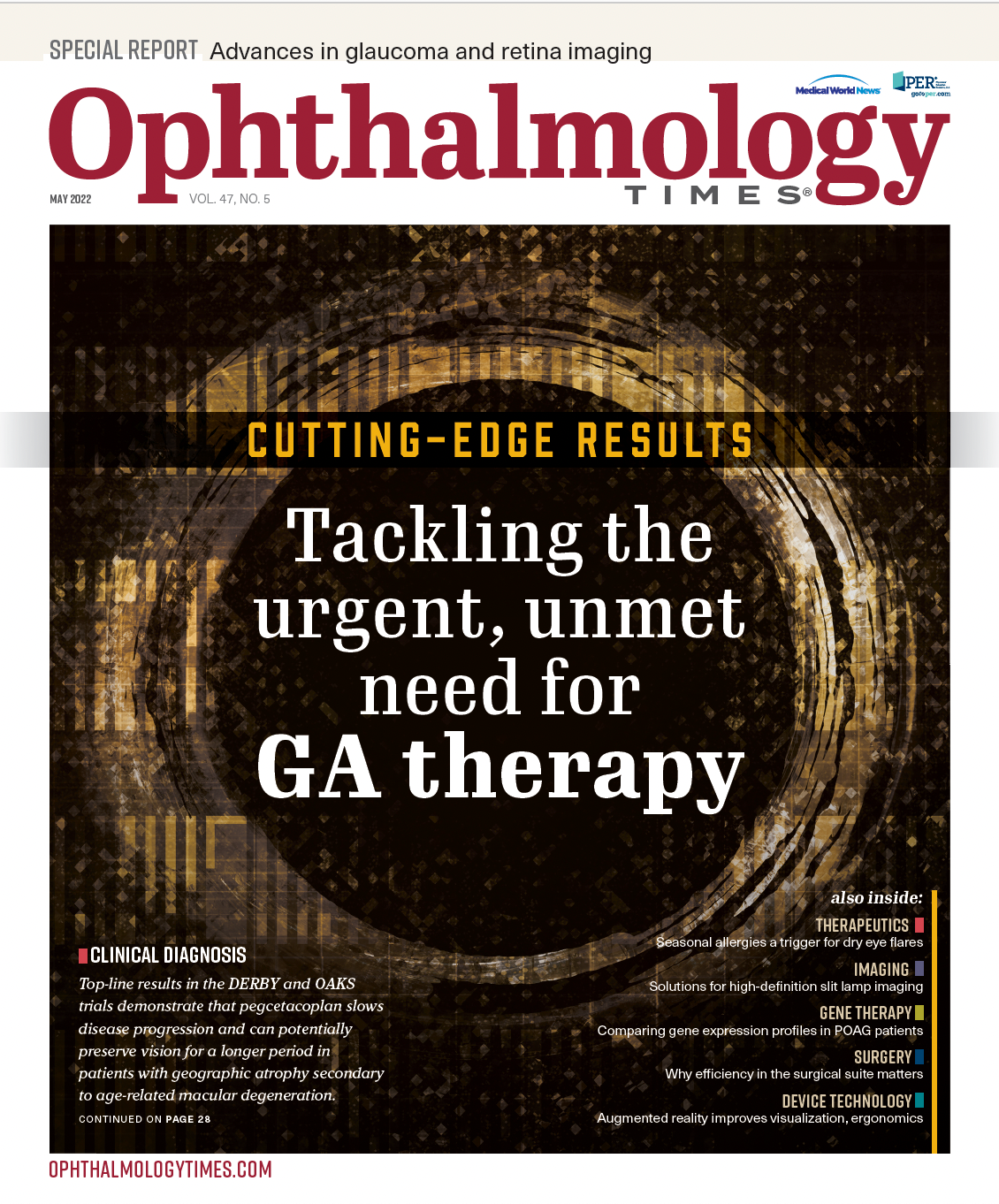Publication
Article
Digital Edition
Augmented reality offers enhanced visualization and improved ergonomics
Author(s):
Physicians can use navigational tools to attain a much more immersive perspective.
Special to Ophthalmology Times®
Digital technology has simplified and enhanced our lives in so many ways—from smartphones that feed us news throughout the day to electronic health records that provide a panoramic perspective of our patients’ medical history. It is not surprising that this ubiquitous technology is at the root of cutting-edge retinal surgery in the form of 3-dimensional (3D) digital microscopes and augmented reality (AR) head-mounted camera systems (HMSs).
When it comes to retina surgery, digital visualization systems are generally associated with several advantages vs traditional optical microscopes, such as lower illumination levels, enhanced depth of field, digital filters that facilitate better view of intraocular structures, and a minimized likelihood of asthenopia. These advantages are further improved upon with the combination of an HMS and AR embodied in the Beyeonics One ophthalmic exoscope (BVI/Beyeonics Vision). This platform, which was first introduced in the US less than a year ago, includes a fully digital microscope, a powerful video-processing computer system, and a surgical headset with a built-in 3D display and control (Figure 1).


Built using technology originally developed for the aerospace industry, the Beyeonics One system is centered on a console equipped with 3D stereoscopic cameras. During surgery, 4K (4 times the resolution of 1080p) high-resolution video from the cameras is transmitted to the surgical headset that offers an up-close, immersive experience (Figure 2).
The headset is controlled by head-gesture commands and a foot switch that can be used to repeatedly change the view—from the actual surgical field to an interior microscopic view of the procedure, overlaid with data from a patient’s health record, preop diagnostic tests, and surgical device readings.
My experience
As the medical director of a recently opened retina practice that I launched after many years in a group practice, I was gratified to have the opportunity to be among the first retinal surgeons in the US to perform surgery with the assistance of this platform. When operating with the Beyeonics One system, we viewed the surgical field in 3D through the surgical headset rather than on an external screen, such as those associated with “heads up” surgical systems. The setup places me at a control center, where I can use the platform to access optical coherence tomography images and other information that can potentially help throughout the procedure (Figure 3).

The Beyeonics One system is distinctive in that it is completely dedicated to digital visualization. The surgical AR headset provides a unique way of communicating with the exoscope, and the system offers heightened ergonomics and freedom to adopt a more natural posture that exceed those associated with heads-up systems. I appreciate that it is a dedicated digital platform.
Advancement in surgical visualization requires the introduction of digital capabilities. Hybrid technologies are limited in the way that the images are blended. In addition, illumination intensities and techniques are different for traditional versus digital microscopy, making the hybrid systems more of 2 parallel systems of microscopy rather than a truly integrated hybrid system.
The AR headset also sets the system apart. HMS technology provides an excellent visual experience and greater ergonomics compared with traditional surgery. The headset houses gyroscopes, allowing head movements to control the XY panning, zoom, focusing, and any other digital options on the microscope.
I had the chance to use this system for several days for a sufficient number of procedures to enable me to say it facilitates greater freedom of movement than other digital systems that I have used.
Logistics
As with any new technology, there is a learning curve, but it was minimal. Within 5 cases, I understood the sensitivity of the cameras and headset, and I was comfortable setting the brightness and contrast and employing filters and edge-detection modalities.
The system's logistical issues must be addressed. For instance, as I approach the surgical field, I wear double gloves. I use the outer gloves to pick up the headset and adjust it for ideal comfort and visualization. I sit in my surgical chair and remove the outer gloves. The inner gloves are sterile, so I proceed with the surgery. It is worth noting that when I used the Beyeonics One system, there was still a cable connecting the headset and console. The manufacturer’s plan is for this connection to be phased out so that the headset will be completely independent from the console.
The future
This system is an intuitive progression of the digitization of society, but it goes beyond simple digital integration. We have an array of navigational tools that we can utilize to attain a much more immersive perspective. I think digital microscopy is the catalyst that will take surgery to into the future.
Jorge Calzada, MD
E: JIC@deepblueretina.com P: 901/522-6520
Calzada is the owner and medical director of Deep Blue Retina in Memphis, Tennessee. He has no financial interest to report. Beyeonics Vision is distributed by BVI in the US.

Newsletter
Don’t miss out—get Ophthalmology Times updates on the latest clinical advancements and expert interviews, straight to your inbox.




